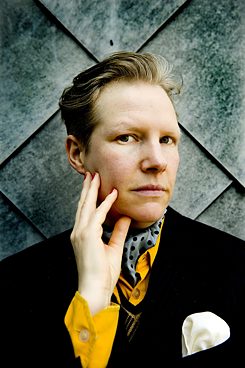Antonia Baehr
Laughter’s Composer

Antonia Baehr is a choreographer and filmmaker. Her work explores the fiction of daily life and the theatre, creating a different and often funny take on society.
Born in 1970, choreographer Antonia Baehr lives in Berlin. After finishing a degree in film and media art at Berlin University of the Arts, she completed her master’s in performance at the School of the Art Institute of Chicago and has taught as a guest professor at various European academies since 2006. Baehr collaborates with different partners on her own pieces, and roll play is often part of the creative process as she and her partner takes turns in the roles of author or choreographer and performer. As a producer, she has worked with artists like dancer Werner Hirsch, musician and choreographer Henri Fleur, and composer Henry Wilt.
 Die Choreografin und Filmemacherin Antonia Baehr
| Foto (Zuschnitt): © Saskia Vanderstic
An example of her work
Die Choreografin und Filmemacherin Antonia Baehr
| Foto (Zuschnitt): © Saskia Vanderstic
An example of her work
In 2015, Antonia Baehr developed Des miss et des mystères with co-producerand long-time collaborator Valérie Castan. Castan provides a running commentary of the dances as they are being performed. Such audio accompaniment is usually used to engage blind patrons, but here it serves a more playful purpose. The descriptions do not always match the action on stage, and the artists use this combination of choreography and audio drama as a high amusing means of confusing the audience.
A unique project
In spring 2007, Baehr began a laughter research project that has grown to include laugh compositions, performance pieces, workshops and a catalogue. Baehr explores the nature of laughter, its sound and rhythm, and the facial expressions and gestures associated with it all completely divorced from context and catalyst. Her book Lachen(Laughter) was released in 2008. In the foreword she writes: “I wasn’t just interested in laughter as a technique and its physiological components. I also wanted to explore the gestural qualities of laughter, its expressive qualities utterly removed from causes and effects; as a manifestation of sound and body.”
In her own words
“Who am I? I don’t know who I am. I am many. There is no one real, authentic identity and a masking that follows. It is everything. A construction and I am many. That is where we as artists and researchers begin: what do I desire to be. Who would I like to be?” (Quelle: der Freitag)
Comments
Comment